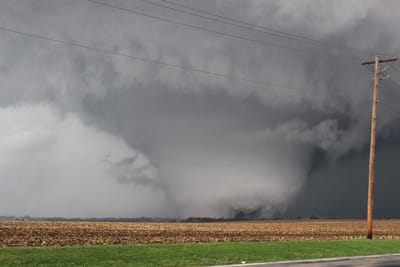
Tornadoes are one of nature’s most destructive forces, packing the most intense winds observed anywhere on Earth and often striking with relatively short notice. Tornadoes are violently rotating columns of air that are attached to a parent thunderstorm cloud. Most tornadoes are relatively weak and short-lived, often roaming briefly across vast expanses of open country in the middle of the United States. However, a rare few become powerful monsters that get talked about for generations.
This article will explore eleven of the worst tornadoes in US history. What makes a tornado count as “the worst”? Different people have different answers to this question. Your worst tornado is the one that strikes you! However, we will focus on a few more objective metrics for our list. We’ll explore the seven deadliest tornadoes and a few others that set records for size, intensity, and cost of damage.
The 7 Deadliest Tornadoes in US History
Here are the seven deadliest tornadoes in US History according to records kept by NOAA’s Storm Prediction Center.
1. The Deadliest Tornado Ever: The Tri-State Tornado – March 18, 1925 (695 Fatalities)
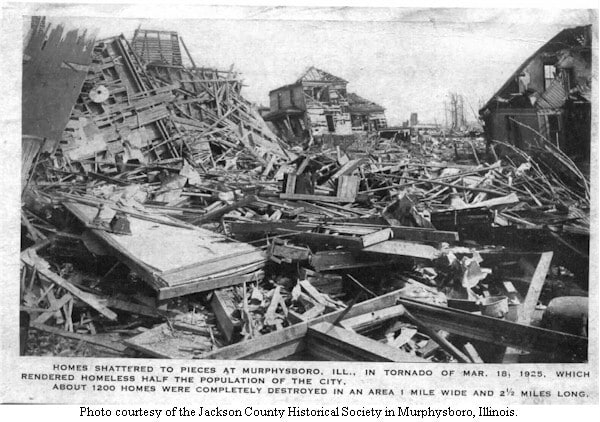
The deadliest tornado in US History occurred nearly 100 years ago on March 18, 1925, when an intense tornado developed in southeastern Missouri before crossing the entire width of southern Illinois and dissipating in western Indiana. The tornado was on the ground for 3 hours and 29 minutes from 1:01 PM to 4:30 PM and traveled 219 miles. That makes it the longest-lived and farthest-traveling tornado in US history, in addition to being the deadliest.
Like most of the tornadoes on this list, the Tri-State storm hit populated areas in an era before the existence of modern severe weather warnings and building techniques robust enough to keep people safe during tornadoes. As a result, the death toll was immense. 695 people were killed in the storm, and many more were injured.
It should be noted that some scholars dispute the notion that this was one single tornado on the ground the whole time. No tornado in the modern era of meteorological observation has even come close to rivaling the Tri-State tornado’s longevity. However, some “supercell” thunderstorms can last many hours and produce multiple strong tornadoes. It is still not known for sure whether the Tri-State tornado really was one single funnel, but regardless, it is the deadliest tornadic storm in US history by a significant margin.
2. Natchez, Mississippi – May 7, 1840 (317 Fatalities)
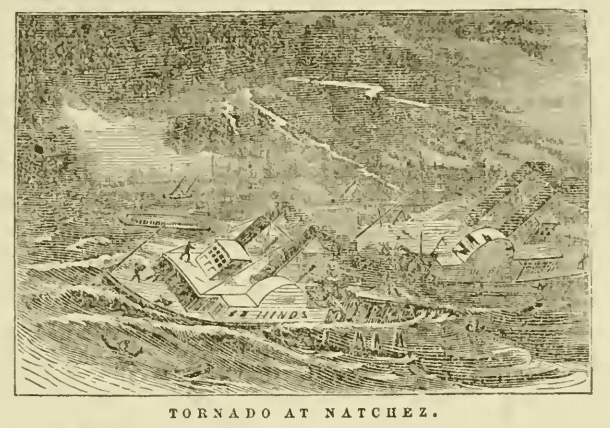
America’s second-deadliest tornado struck Natchez, Mississippi, on May 7, 1840. Like the Tri-State tornado, the death toll was so high, mainly because no warnings existed at the time. Another significant contributing factor was the presence of several early Mississippi River barges and steamships in Natchez when the storm rolled through, in part because nearby Vicksburg, Mississippi, had recently decided to tax boats that wished to dock in town. Thus, more ships than usual had carried on to Natchez.
Without warning of the impending tornado, passengers and crew aboard these ships were extremely vulnerable to the tornado’s intense winds, and more than 317 ultimately died. The death toll from this tornado is likely much higher than the reported count because many victims were carried downstream by the Mississippi River and never found. Because this tornado occurred so long ago, there are no reliable records of its path length, width, or wind speed.
3. St Louis, Missouri – May 27, 1896 (255 Fatalities)
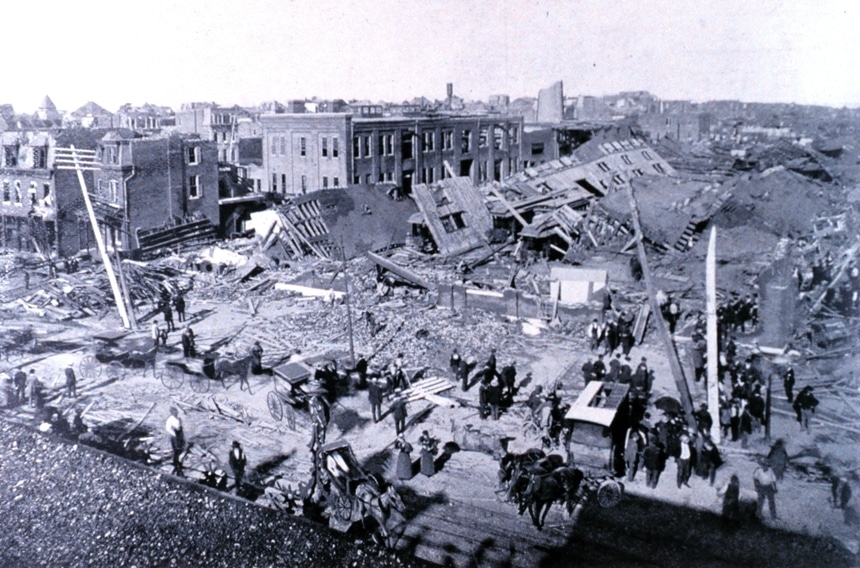
A tornado that hit Saint Louis, Missouri, on May 27, 1896, takes the number three place on our list. The deadly tornado killed 255 in the roughly 20 minutes it was on the ground. The tornado traveled about 10 miles, destroying 311 buildings and severely damaging another 7,200.
Because this tornado struck long before reliable damage surveys could estimate the wind speed, we don’t know exactly how strong its winds were. That said, even a tornado we would consider moderately strong today could cause a tremendous loss in the era before dependable forecasts and sturdy building codes.
4. Tupelo, Mississippi – April 5, 1936 (216 Fatalities)
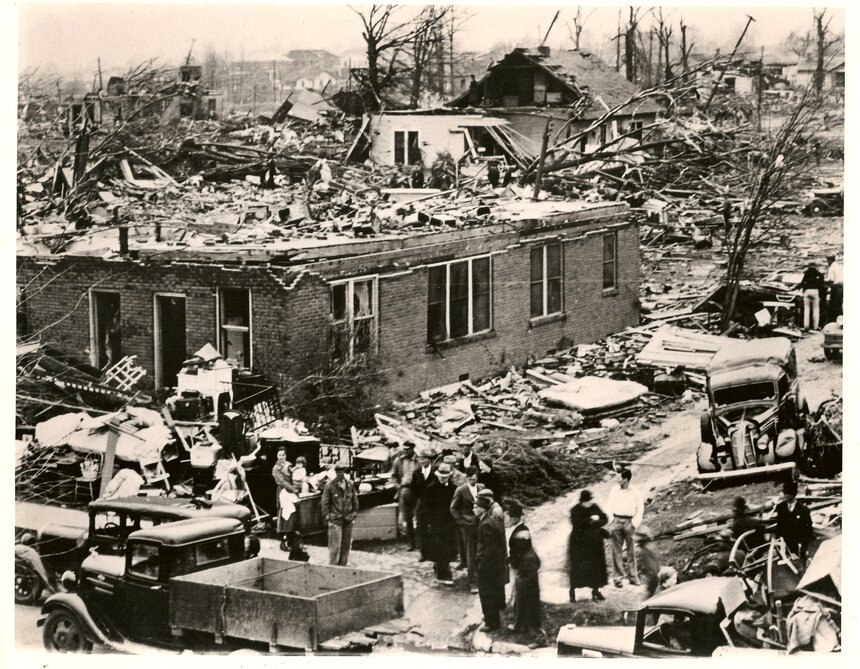
According to official records, a powerful tornado that ripped through a predominantly residential part of Tupelo, Mississippi, in April 1936 is the fourth-deadliest in US history. However, because only the names of white victims were recorded, the true death toll is likely much higher. Probably the most notable survivor of the Tupelo tornado was a fifteen-month-old baby named Elvis Presley.
This tornado occurred before official damage surveys began producing somewhat reliable estimates of a tornado’s intensity. Still, the Tupelo tornado was retroactively estimated to be an F5, the most powerful class of tornado with winds over 200 mph.
5. Gainesville, Georgia – April 6th, 1936 (203 Fatalities)
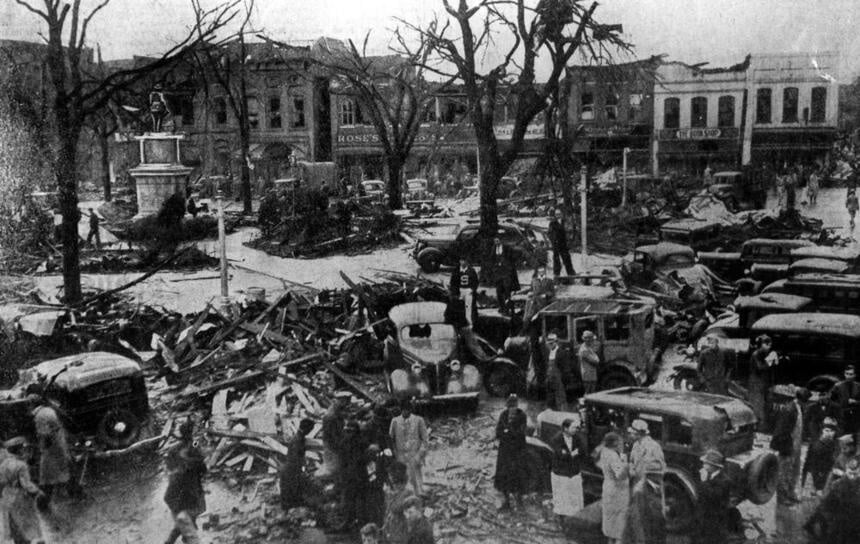
Not even 24 hours after the Tupelo tornado came the fifth-deadliest twister in US history in Gainesville, Georgia. Both tornadoes were part of a large tornado outbreak, one of the first reliably recorded in US history.
The Gainesville, Georgia, tornado was later estimated to have been an F4, not quite as intense as the Tupelo storm but still extremely powerful. The Gainesville storm killed 203 people and caused widespread damage in the town’s center. President Franklin Delano Roosevelt took notice of the need for federal aid to rebuild the town and personally dedicated the new County Courthouse when it was completed in 1938.
6. Woodward, Oklahoma – April 9, 1947 (181 Fatalities)
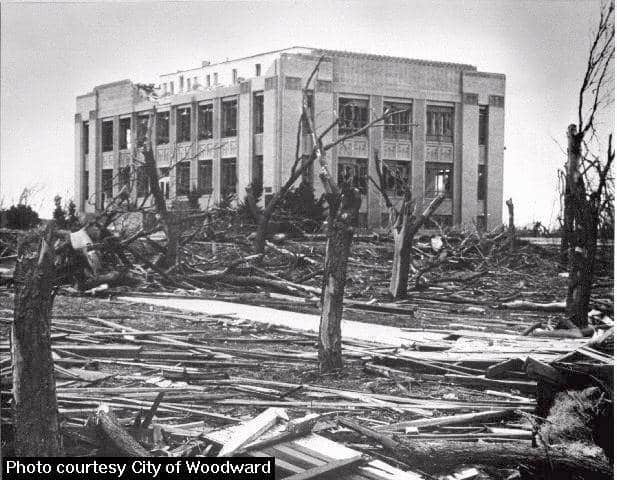
The Woodward, Oklahoma tornado that struck on April 9, 1947, remains America’s sixth-deadliest, with 181 killed. This is also the first tornado on our list to receive an official damage survey from US Weather Bureau meteorologists (the Weather Bureau was the predecessor of the current US National Weather Service). This survey determined the tornado was 1.8 miles wide at its most prominent and moved with an average speed of 42 mph. Later, the information collected in this survey was used to give the storm an F5 rating (the Fujita Scale wasn’t developed until 1971).
7. Joplin, Missouri – May 22, 2011 (158 Fatalities)
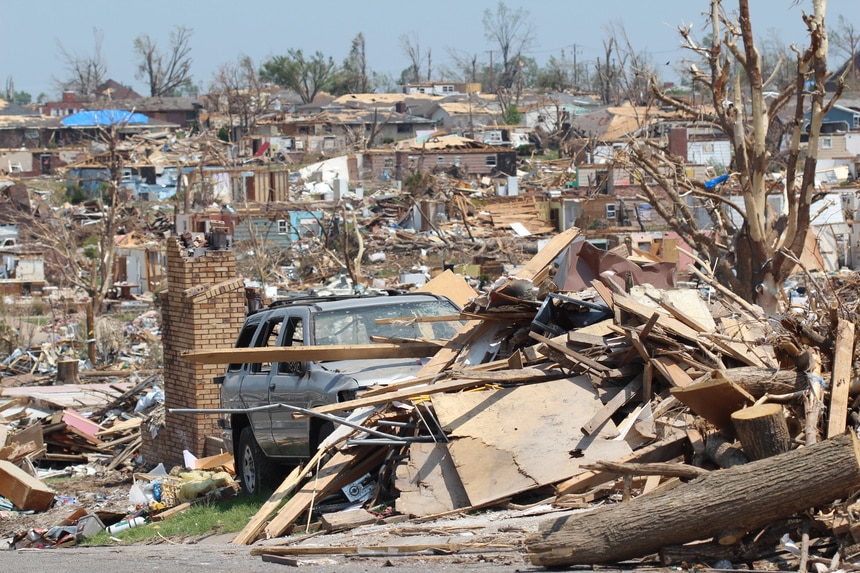
The only tornado on our list (among the top 25 deadliest US tornadoes) to strike during the 21st century, Joplin is perhaps the most impressive and tragic storm discussed here. Despite all the benefits of an extremely effective modern tornado warning system and robust building codes, 158 people were still killed.
While the National Weather Service issued a tornado warning 17 minutes before the storm hit and tornado sirens were sounded accordingly, many residents reported either not receiving the warning or not taking it seriously since there had been several false alarm warnings in the recent past. While modern buildings generally offer better protection than structures built in the late 19th or early 20th centuries, few structures even today can withstand the full fury of an EF5 tornado with winds well over 200 mph.
Joplin remains a somber reminder that despite incredible progress in meteorology, warning technology, and building standards, more work must be done before we make killer tornadoes a relic of the past.
4 More Record-Breaking Tornadoes
We’ve explored several of the deadliest tornadoes in the United States, but what about the biggest and strongest storms? They’re not always the same! Many tornadoes stay over the vast expanses of open farmland found throughout the Great Plains. Today, with warnings issued by the National Weather Service, even tornadoes that cause destruction in populated areas don’t generally take as many lives as storms from earlier eras that struck without warning. With that in mind, let’s take a look at four more record-breaking tornadoes.
1. The Biggest Tornado Ever: El Reno, Oklahoma – May 31, 2013 (2.6 Miles Wide)
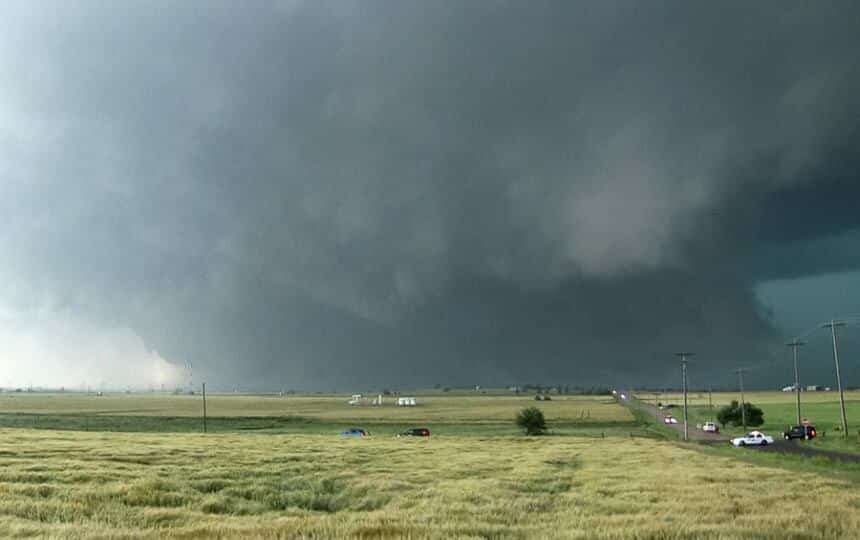
The biggest tornado ever, as measured by the width of the damage path, struck just west of El Reno, Oklahoma, on May 31, 2013. It was 2.6 miles wide at its largest, with intense straight-line winds (not directly part of the tornado’s circulation but still dangerous) extending another 2-3 miles south of the funnel.
Although the El Reno death toll of eight is modest compared to the other storms we’ve been discussing so far, it is one of the most notorious tornadoes among meteorologists because it claimed the lives of three severe storm researchers. Tim Samaras, his son Paul, and their research partner Carl Young were attempting to deploy sensors to measure the barometric pressure in and near the tornado when it suddenly shifted direction and tossed their car several hundred yards. Despite their deep expertise and generally cautious storm chasing style, Tim, Paul, and Carl remain the only three people killed by a tornado while storm chasing.
Other severe storm researchers positioned slightly farther from the tornado with mobile weather radar units detected winds near 300 mph in the funnel, but the El Reno tornado is officially rated an EF3 storm. This is because it remained largely confined to rural areas and didn’t impact very many structures. Thus, based on damage alone, the criteria for determining an EF-scale rating, the El Reno tornado was “only” an EF3.
2. The Costliest Tornado Ever: Joplin, Missouri – May 22, 2011 ($3.8 Billion 2023 USD)
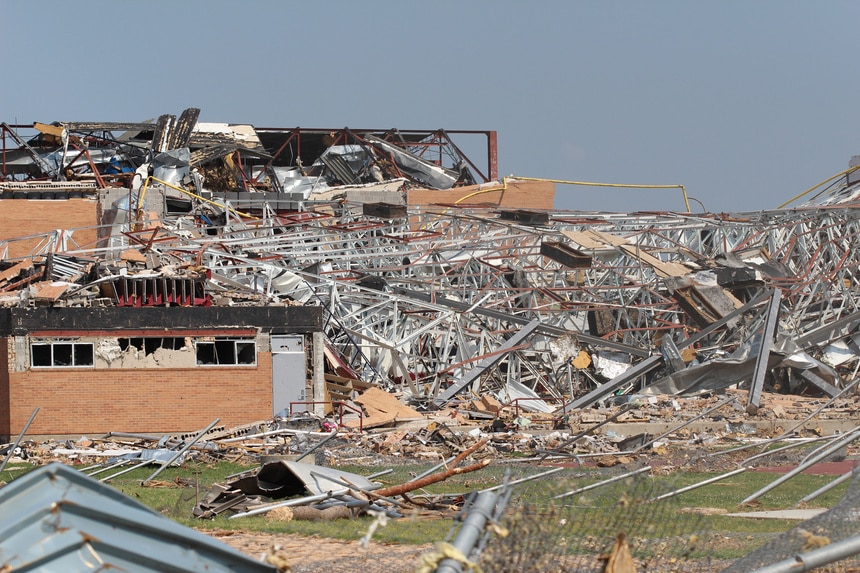
The seventh-deadliest tornado, which struck Joplin, Missouri, is also the costliest on record, even after adjusting the older storms for inflation. This is mainly because as America has grown, we’ve put so much more infrastructure in harm’s way in the decades since the older tornadoes discussed in this article. With cities and towns continuing to expand across the country, we’re likely to see even more expensive tornadoes in the future, even if early warnings continue to lower the human toll.
3. The Worst Tornado Outbreak: April 3-4, 1974 Super Outbreak (7060.6 Adjusted Fujita Miles)
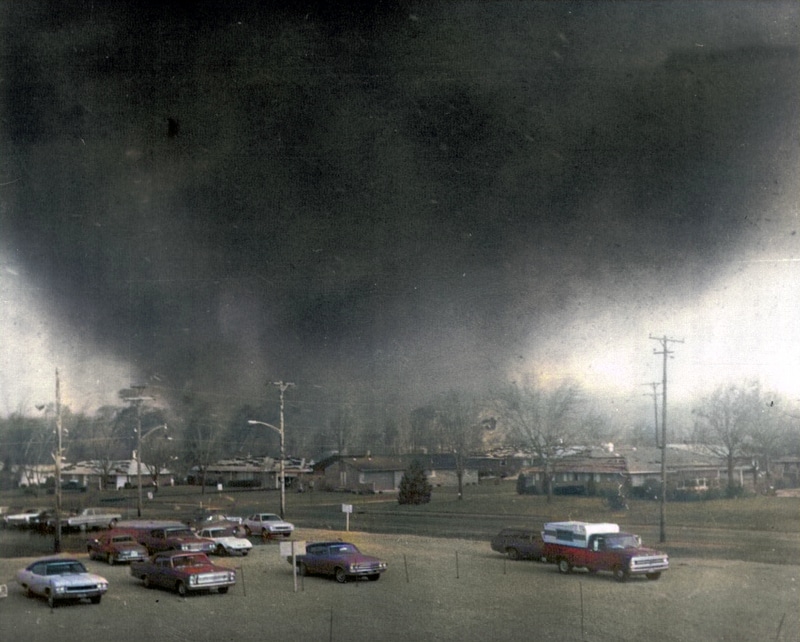
A tornado outbreak is defined as an event in which multiple (usually ten or more) tornadoes occur in association with the same large-scale weather system. When discussing the worst tornado outbreaks in US history, two events stand far above the rest: April 3-4, 1974, which hit the eastern Ohio Valley hardest, and April 25-28, 2011, which stretched from Texas to New York but hit Alabama, Mississippi, and Tennessee the hardest. These two outbreaks are widely called “super outbreaks” by meteorologists, even though no strict criteria for such a label has been established.
There is considerable debate regarding which outbreak was “worse.” The 2011 outbreak produced more tornadoes, but that could be in part because we were better at finding and documenting them. The 2011 outbreak was also more expensive, but at least partly because we’ve built more stuff for tornadoes to hit since 1974. On the other hand, the 1974 outbreak produced more violent F4-F5 tornadoes and killed significantly more people.
The April 3-4, 1974 Super Outbreak produced a total of 148 tornadoes, 7 of which rated as an F5, 23 of which were F4, and 34 of which were F3. The April 25-28, 2011 outbreak produced 324 tornadoes, 4 of which were rated EF5, 11 of which were rated EF4, and 22 of which were rated EF3. The much larger total number of tornadoes in the 2011 super outbreak is due to many more weak (EF0-1) tornadoes being discovered and documented with modern damage surveying techniques.
To settle the debate, a group of researchers developed a new metric, Adjusted Fujita Miles, that essentially counts how many miles of terrain were impacted by tornadoes of various intensities. An F5 tornado traveling for two miles will be recorded as 10 Fujita Miles, while an F1 tornado would need to travel ten miles to achieve the same number of Fujita Miles. The researchers found this metric to correlate best with damage and fatalities across many outbreaks studied.
By this metric, the April 3-4, 1974 outbreak (7060.6 Adjusted Fujita Miles) takes the cake for the worst outbreak in US history, given the number of long-lived violent tornadoes that traveled many miles and impacted many communities. This outbreak killed 335 people in all and injured more than 6,000. The most famous tornado from this outbreak hit Xenia, Ohio, as an F5 and caused some of the most complete destruction of any tornado in the modern era.
4. The Strongest Tornado Ever: Bridge Creek, Oklahoma – May 3, 1999 (301 mph)
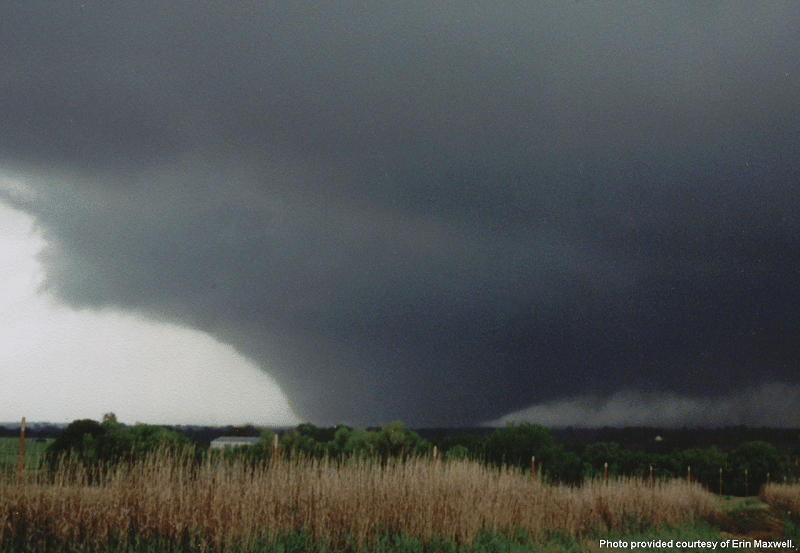
The strongest tornado ever is not truly known, given that even a mid-grade F/EF2-3 tornado is more than capable of wiping weather instruments off the map. Our best guesses of tornado intensity come from the damage they cause and, in more recent years, from mobile weather radar observations. These mobile radars use the doppler effect to determine how quickly objects within a storm, like rain, snow, or, in the case of tornadoes, the debris, are moving.
The generally accepted strongest mobile radar measurement of a tornado’s winds is 301 mph (+/- 20mph), observed by a University of Oklahoma mobile radar unit near Bridge Creek, Oklahoma, on May 3, 1999, during an outbreak of especially intense tornadoes in central Oklahoma. The actual ceiling of tornado wind speeds is the subject of much debate among meteorologists. Some even argue tornadic winds could briefly approach or exceed the speed of sound (761 mph) as they dissipate, though no measurements have so far been taken to prove or disprove this.
Final Thoughts
America is no stranger to tornadoes and hasn’t been throughout its history. The US has the most tornadoes of any country in the world, focused especially in the Great Plains from Texas up into the Dakotas (often referred to as “Tornado Alley”) and in the Southeast from Louisiana over to Georgia (often referred to as “Dixie Alley”). Our ever-expanding cities and towns mean that tornadoes only pose an increasing threat to both people and property. Thankfully, tornadoes have gotten considerably less deadly in the last 50-100 years, even as more and more people have moved into harm’s way. This is largely attributable to the increasingly effective early warnings issued by meteorologists in the National Weather Service.
Americans in the 19th and early 20th centuries had no warning for tornadoes besides whatever clues they could gather from looking at the sky. The first government meteorologists were even banned from mentioning the word “tornado” in their forecasts for fear it would cause panic given that forecast skill was essentially zero. By 2013, the average US tornado was preceded by a warning 13 minutes before the storm hit, giving residents in harm’s way enough time to seek shelter. Continued research efforts aimed at increasing this lead time even further are ongoing.




